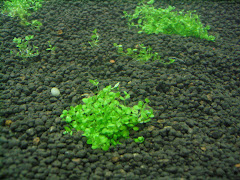
30 Mart 2009 Pazartesi
27 Mart 2009 Cuma
23 Mart 2009 Pazartesi
22 Mart 2009 Pazar
18 Mart 2009 Çarşamba
Moenkhausia pittieri, ( Diamond Tetra )
Umarim Bu tetra cinsi nin sonu da Galaxy rosbara'ya benzemez!
Wild Discus Fish (Original Habitat)
Evimizdeki akvaryumlari nasil berrak tutmaya calisiyoruz degilmi! Oysa dogal ortamin evdeki tanklarla hic alakasi yok !
Neon Tetra - Dogal yasam alani (original Habitat)
Mukemmel bir alan ve ayni zamanda sahip cikiliyor olmasi ne kadar guzel :)
Lake Malawi
Lake Malawi (Malawi Golu)
Sanirim gormeyi istedigim birkac yerden biri MalawiGolu, BBC kanali belgeselinden Malawi golu ile ilgili kisimdan sectigim kisa bir bolum, seyredince sanirim bana hak vereceksiniz (ozellikle chiclid meraklilari)
16 Mart 2009 Pazartesi
6 Mart 2009 Cuma
5 Mart 2009 Perşembe
3 Mart 2009 Salı
2 Mart 2009 Pazartesi
Galaxy Rasbora





Galaxy Rasbora,Celestichthys margaritatus
Common name: Galaxy Rasbora, Celestial Pearl Danio
Scientific name: Celestichthys margaritatus, Microrasbora sp.
Geographic location: Inle Lake, Myanmar
Size: Up to 2.5cm (1 inch)
Temperament: Peaceful
Conditions: 70F-78F, pH 7.0-7.5
Skill level: Intermediate
Minimum tank size: 2.5-5 gallons
This is a brand new species, only first discovered last year. It was also recently renamed from "Galaxy Rasbora - Microrasbora sp." to "Celestial Pearl Danio - Celestichthys margaritatus." It comes from only one known location in Myanmar (formerly Burma) and due to over-collection is already threatened.
Its bright coloration and small size make it a perfect addition to a planted nano aquarium. It is similar to other danios in habits and shape. The males are much more brightly colored than the females and have a deeper blue coloration with much more red on the fins. Since this fish is so small even fully grown, it is advisable to keep it in a tank of non-aggressive smaller fish that won't try to eat it (and you won't want to loose one of these, they commonly go for $8-10 each or more, and that's only likely to go up). It prefers cooler, more alkaline water, but not much information is available on its natural habitat, as Myanmar is a military dictatorship. Like almost any fish, it will be much healthier with live aquarium plants.
Some hobbyists have already called for a boycott of the fish to prevent it from being collected into extinction in the wild. Fish collectors are already reporting dramatically reduced catches. Others have tried and successfully bred these little fish in the aquarium. My opinion is, if you want to seriously try to breed these fish, go ahead and get some. Otherwise, who wants to contribute to the extinction of such a beautiful species?
Source: Aquatic Eden
Amano Karides (Amano Shrimp)
Kaydol:
Yorumlar (Atom)


















